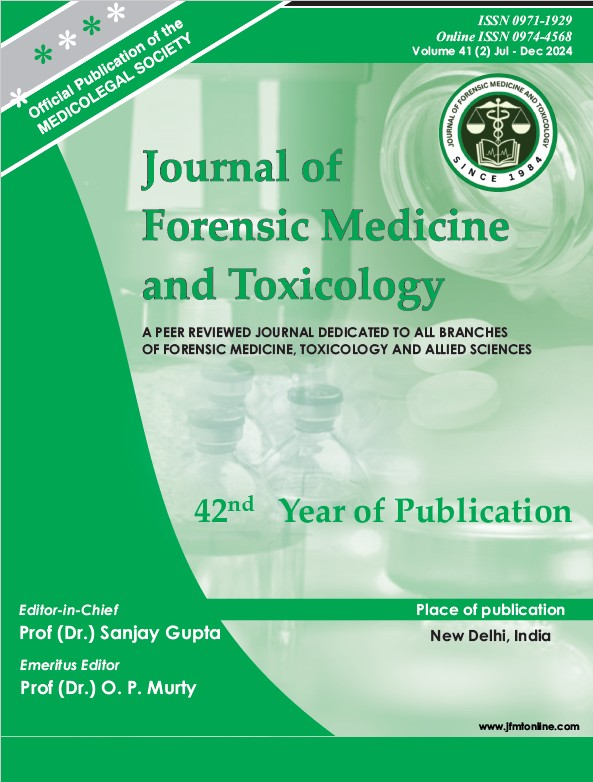War with Wicked Wounds- Rightful interpretation of intricate injuries and meticulous autopsy preventing both wrongful convictions and miscarriage of justice.
DOI:
https://doi.org/10.48165/jfmt.2025.42.3.20Keywords:
Wound interpretation, Antemortem, Postmortem, JudiciaryAbstract
Differentiating between antemortem and postmortem injuries is of paramount importance for medical and legal rea sons. Wrong interpretation of injuries and subsequently the wrong cause of death would lead to a miscarriage of justice. Ideally in a fresh intact body the position and gross findings may indicate the cause and time of injury. Decomposition and dismemberment of a body will make difficult for subsequent identification. However, careful examination at autopsy helps in knowing the injury (antemortem or post-mortem) even in a decomposed or dismembered body. Here we report a case of a decomposed and dismembered body, where a diligent autopsy examination helped in correctly ascertaining the nature of injuries, the manner of death and thus aiding in apt execution of justice
Downloads
References
Banwari M. An erroneous opinion on a cause of death in a forensic autopsy: a case report. Afr Health Sci. 2017;17(4):1246-9.
Tyagi A, Tyagi S, Malik N, Chawla H. Postmortem cadav eric depredation by animals – a diagnostic dilemma. Int J Forensic Med Toxicol Sci. 2016 Oct;1(1):20-3.
Rodriguez-Martin C. Identification and differential diagnosis of traumatic lesions of the skeleton. In: Schmitt A, Cunha E, Pinheiro J, editors. Forensic anthropology and medicine: complementary sciences from recovery to cause of death. Totowa (NJ): Humana Press; 2006. p. 197-221.
Wieberg DAM, Wescott DJ. Estimating the timing of long bone fractures: correlation between the postmortem interval, bone moisture content, and blunt force trauma fracture characteristics. J Forensic Sci. 2008;53(5):1028-
34.
Sauer NJ. The timing of injuries and manner of death: distinguishing among antemortem, perimortem and postmortem trauma. In: Reichs KJ, editor. Forensic oste ology: advances in the identification of human remains. Springfield (IL): Charles C Thomas; 1998. p. 321-32.
Raekallio J. Timing of wounds: an introductory review. Ann Acad Med Singap. 1984 Jan;13(1):77-84.




